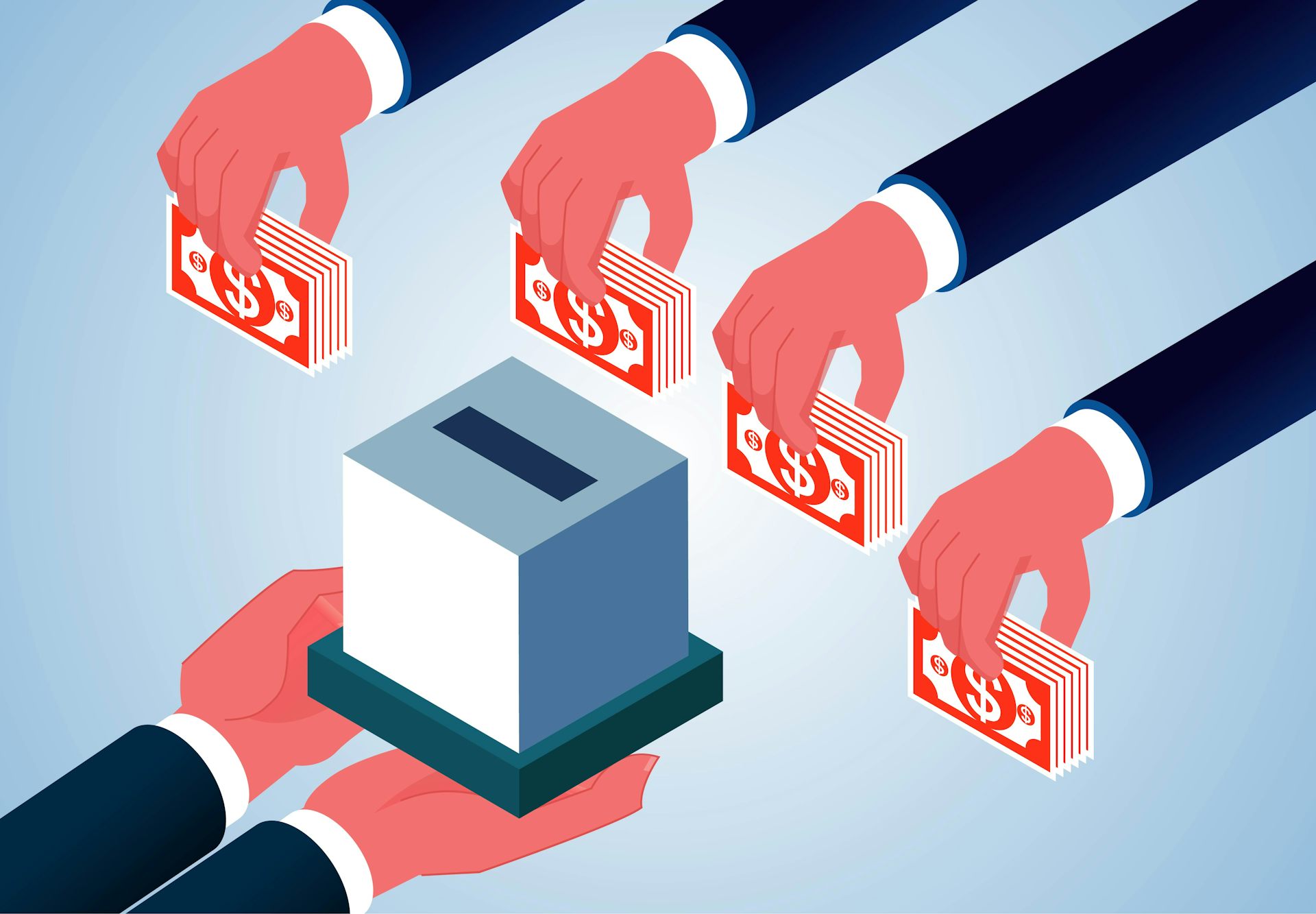Teacher pensions are becoming a bigger share of educational costs
States are struggling to cover pension costs for public school teachers. A education policy expert weighs in on potential solutions.

The 2022 stock market plunge has taken a toll on some of the nation’s largest state and municipal pension funds, making it harder for governments to pay for future retirement benefits to millions of K-12 teachers and other public employees.
Here, Michael Addonizio, an education policy expert at Wayne State University, provides insight on how teacher pensions are affecting K-12 school budgets overall and what, if anything, can be done to better manage pension systems and close funding gaps.
1. Is there enough money to pay teacher pensions?
Yes and no. There is enough money to pay pension benefits to current retirees. But there is not enough money to pay all promised benefits to future retirees.
U.S. teacher pension funds collectively manage about US$3 trillion in assets. These dollars are invested in various ways – stocks, bonds, real estate, foreign currency, and other ways. But these assets held by the retirement plans are generally less than the plans’ liabilities – that is, the projected cost of benefits promised to future retirees. As of 2022, this gap between assets and liabilities is about $878 billion. Put another way, the ratio of assets to liabilities is about 77%. This ratio is down from about 84% in 2021, but is higher than any other year since 2008.
The amount spent on teacher retirement costs in 2020 – $65.9 billion – represented 5.5% of total state and local K-12 spending.
The problem is that these retirement costs have been growing faster than total K-12 expenditures for decades. In 2001, retirement costs amounted to only 1.3% of total state and local school spending.
The growth in teacher retirement costs is due mostly to an increase in payments for unfunded pension liabilities, often referred to as pension debt. This is the amount of money that states and municipalities pay annually into their retirement systems to cover previously unfunded liabilities – that is, the shortfall that a pension fund needs to pay all future promised benefits.
2. How do these pension funding shortfalls occur?
Every year, pension planners have to make assumptions about how fast teacher salaries will grow, how many teachers will teach long enough to qualify for a pension, how long qualified retired teachers will live and collect benefits and how the pension fund’s investments will perform. If all these assumptions are correct and the plan’s expected assets cover its expected liabilities, the plan is considered fully funded.
But the typical teacher pension plan has not been fully funded at any point since about the year 2000. Overly optimistic investment assumptions are often the biggest part of unfunded liabilities. In response, states or big cities often redirect money from school operating budgets into the pension funds. But these governments often fail to make these payments in full.
States and cities face fiscal pressures from other spending demands and from tax collections that fail to keep pace. Pushing some unfunded pension liability costs into the future is often seen as less painful than cutting current government programs or raising taxes. But skimping on covering costs for future retirees often compounds the system’s liability problem over time.
In 2021, fully 69% of teacher retirement costs went to cover unfunded pension liabilities, up from 17% in 2001. In other words, the cost of future benefits is growing faster than the cost of current-year benefits.
Could it be due to increasingly generous retirement benefits? No. A recent report by the Equable Institute, a bipartisan nonprofit that studies public pensions and advises employees, communities and policymakers, concludes that the average value of lifetime benefits for new teachers is about $100,000 less than for their more senior colleagues.
Rather, unfunded pension liabilities can rise because of downturns in the financial market, lowering the systems’ investment earnings. Also, they may increase when schools hire more teachers and support staff, increasing the numbers of workers in the pension system. It can also be due to the rising cost of borrowing,
3. What does this mean for education funding?
As more public dollars flow to teacher retirement systems, fewer resources are available for schools and classrooms. From 2002 to 2020, total state and local K-12 spending rose 33%, while teacher retirement spending rose 220%. Nationally, and in most states, teacher pension costs have been rising faster than K-12 spending for the past two decades. States then take money from state funds normally dedicated to school operations and move them to the pension fund. The result has been less spending for school operations, in the form of either spending cuts or a smaller share of a growing spending pie.
For example, in the 2022-23 fiscal year, my state of Michigan will pay nearly $3 billion from the state School Aid Fund into the state-administered Public School Employees Retirement System to cover future pension costs. However, while this move will lower the amount of unfunded liabilities in the system, these dollars will come directly from state funds intended to support general K-12 school operations.
This practice has been repeated in many states over the past two decades. According to the Equable Institute study, the “hidden cuts” of using K-12 funds to cover pension costs have risen from $457 per student in 2001 to $1,290 per student in 2021 – a 182% increase in constant 2021 dollars.
4. How can the problem be solved?
The solutions rest with the states, and there is no “one size fits all” remedy. Each state has its own K-12 funding system and teacher retirement plans, which are governed by many rules that are embedded in state constitutions and laws. These state laws vary. For example, teachers in 15 states, including California and Texas, aren’t covered by the Social Security system. But there are some common issues and ways to address them.
One common problem is transparency. While it’s usually relatively easy to see how much states, districts and schools are spending for operations, it’s much more difficult to find public data on teacher retirement costs, particularly pension liability costs, because the data is remarkably scarce.
Pension dollars are as much a part of public education budgets as spending on teacher and staff salaries, books, buses and the rest. Careful monitoring and reporting of pension costs, both payments and liabilities, may improve management of these costs before they inflict more damage on budgets for teaching and learning.
Secondly, many states have reduced their financial support for K-12 schools in recent years. The share of personal income given to K-12 schools has steadily declined since the 2007-2009 Great Recession in 39 states.
States could protect school operating budgets by using general fund revenue to pay pension liability costs, not dedicated K-12 aid. Local districts could be responsible for the cost of current-year retirement benefits but cannot do much to manage unfunded pension liabilities. States could cover pension debt costs without reducing state aid for school operations, but it would require raising taxes or cutting programs in other areas.
To begin moving in this direction, states could restore their pre-recession levels of tax effort for K-12 education. A recent study by researchers from Rutgers University, the University of Miami and the Albert Shanker Institute concluded that had all states done this by 2016, schools would have reaped $288 billion in added funding.
Trading off pension support against school operating funds is not an inevitable result of rising pension costs. Whether states have the economic means or political will to address this problem effectively remains to be seen.
Michael Addonizio does not work for, consult, own shares in or receive funding from any company or organization that would benefit from this article, and has disclosed no relevant affiliations beyond their academic appointment.
Read These Next
Data centers need electricity fast, but utilities need years to build power plants – who should pay?
How many data centers will be built – and how much electricity they’ll need – is uncertain. Being…
Whether Netflix or Paramount buys Warner Bros., entertainment oligopolies are back – bigger and mor
Hollywood has seen this movie before.
Donor-advised funds have more money than ever – and direct more of it to politically active charitie
When foundations make grants to DAFs, the digital trail normally created instead becomes a dead end.






